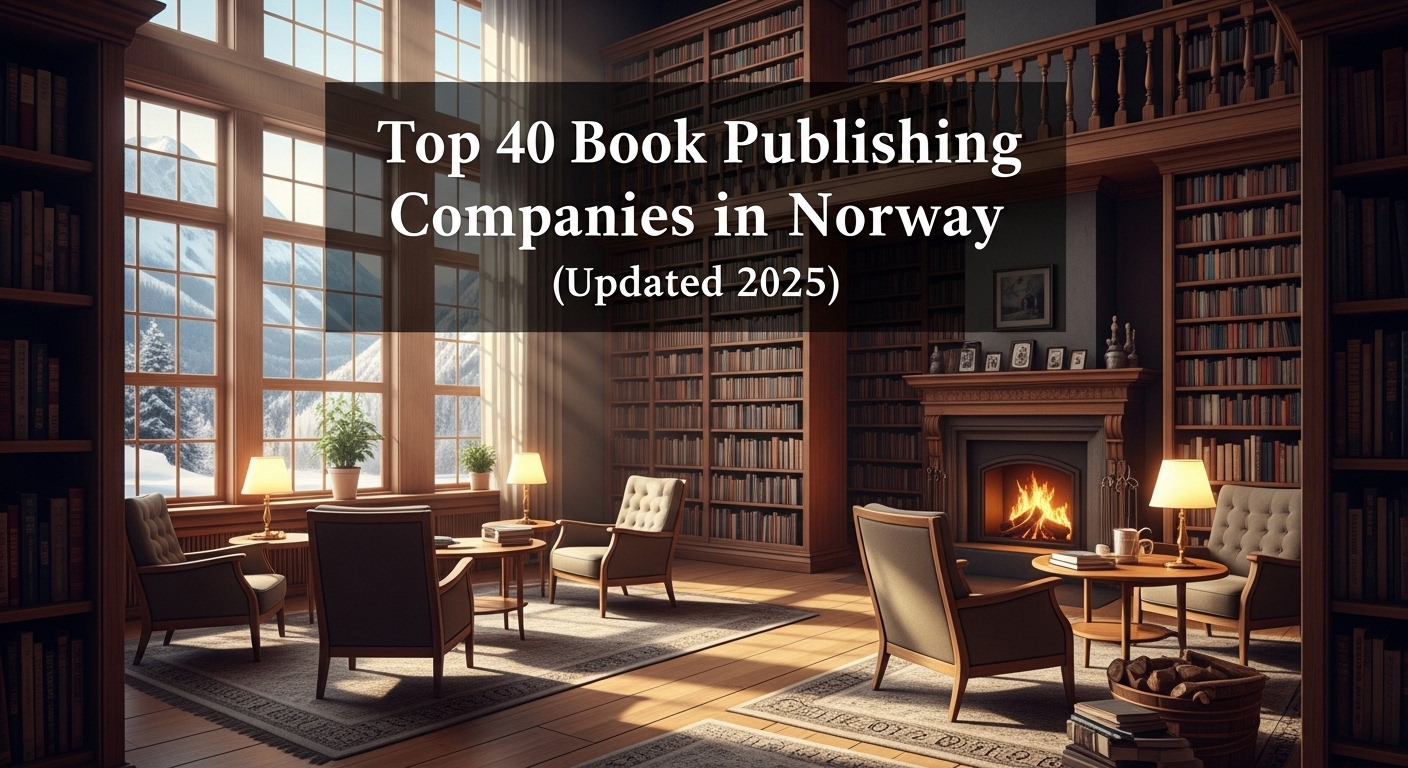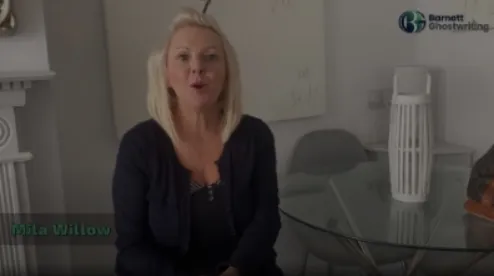
Norway’s book publishing industry is a vibrant mix of tradition, innovation, and cultural pride. From globally recognized literary houses to specialized Sámi-language presses, the country offers diverse opportunities for authors across genres. With high literacy rates, strong government support for literature, and a growing demand for digital and audio formats, Norwegian publishers play a vital role in shaping both national and international literary landscapes. In this updated 2025 guide, we explore the top 40 book publishing companies in Norway, providing insight into their specialties, strengths, and how they can help bring your manuscript to life.
1) Barnett Ghostwriting
A full-service partner for authors who want concept-to-book support—ghostwriting, professional editing, publishing guidance, and distribution coordination. Ideal for busy professionals or subject-matter experts who need end-to-end help and a pragmatic route into Nordic markets.
2) Gyldendal Norsk Forlag
One of Norway’s most influential trade houses with a deep literary heritage. Strong across literary fiction, commercial titles, and nonfiction, with robust distribution and brand recognition.
3) Cappelen Damm
A major player spanning children’s, YA, crime, cookbooks, lifestyle, and serious nonfiction—plus powerful audiobook capabilities. Excellent national reach and marketing muscle.
4) H. Aschehoug & Co. (Aschehoug)
Prestige list renowned for nurturing literary voices and thought-provoking nonfiction. Strong editorial development and prize presence; excellent for literary careers.
5) Vigmostad & Bjørke
A large, dynamic group with commercial fiction, practical nonfiction, and educational lines. Good fit for accessible, market-driven projects and series.
6) Forlaget Oktober
A beacon for high-literary fiction, essays, and ambitious prose. If your manuscript is stylistically daring and voice-forward, this imprint deserves a close look.
7) Kagge Forlag
Known for compelling narrative nonfiction, memoirs, and current-affairs titles with strong Norwegian hooks. Great editorial instincts for topical stories.
8) Det Norske Samlaget
Publishes in Nynorsk across literature and children’s books. If your work targets Nynorsk readers—or you’re translating—Samlaget is an essential stop.
9) Universitetsforlaget
Scholarly and professional publishing with strong ties to Norwegian academia. Ideal for research-based books, policy, and professional practice.
10) Pax Forlag
A serious nonfiction house foregrounding society, ideas, and history. Works well for rigorous, argument-driven manuscripts with a public-debate angle.
11) Spartacus Forlag
Accessible humanities and history across a range of topics. A good match for authors who blend scholarly depth with readability.
12) Kolon Forlag
Champion of poetry and experimental prose. If you’re a poet or hybrid writer, Kolon’s curatorial focus can be game-changing.
13) Press
Celebrated for visually rich nonfiction, design-forward books, and cultural titles. Excellent for photobooks and art-adjacent narratives.
14) Pelikanen Forlag
A Stavanger-based literary press publishing bold contemporary voices and select translations. Strong editorial identity and curatorial spine.
15) Res Publica
Politics, journalism, and public-interest nonfiction. Great for investigative or policy-minded authors aiming at the national conversation.
16) Fagbokforlaget
Educational, vocational, and professional lists with national reach. A natural fit for course-aligned texts and handbooks.
17) Tiden Norsk Forlag
Fiction, YA, and voice-driven narratives with a contemporary feel. Solid option for storytellers connecting with modern Norwegian readers.
18) Solum Bokvennen
Classics, essays, and literary heritage. If your project converses with the canon or essayistic tradition, this imprint offers a strong home.
19) Manifest
Topical, left-leaning nonfiction oriented toward debate and activism. Best for timely polemics and social-movement literature.
20) Children’s Imprints at Major Houses (e.g., Stjerne)
Focused children’s lines under bigger groups (like Cappelen Damm) that specialize in picture books, early readers, and middle-grade series.
21) Bonnier Norsk (incl. Strawberry heritage)
Commercial power with celebrity-driven nonfiction and popular fiction. Strong publicity angles and retail presence.
22) Font Forlag
Quality nonfiction and crime. Ideal for narrative nonfiction with a hook, as well as page-turning crime series.
23) Vega Forlag
Popular nonfiction spanning lifestyle, history, and general interest. A good match for accessible, well-packaged ideas.
24) Mangschou Forlag
Children’s and YA list with heart. Excellent for middle-grade adventures and YA realism grounded in Norwegian settings.
25) Ena Forlag
An imprint dedicated to children’s titles, early readers, and picture books—attentive to visual storytelling and child-centered themes.
26) No Comprendo Press
Graphic novels, comics, and satirical works. If your story is primarily visual, this is a natural destination.
27) Dreyer
Cultural nonfiction with intellectual depth. Suits authors who can bridge academic rigor and public appeal.
28) Kontur Forlag
Design, architecture, and visual culture. Best for design-heavy books that need superb production values.
29) Museumsforlaget
Regional and museum-aligned publishing, often spotlighting local history and cultural heritage projects.
30) Orkana Forlag
Emphasis on Northern Norway, culture, and regional studies. Ideal for projects rooted in northern perspectives.
31) Skald Forlag
Strong regional identity with a notable children’s list; excellent production values and a sense of place.
32) Idut
Publishes in Sámi languages; a cornerstone for Indigenous literature, education, and cultural continuity.
33) Davvi Girji
Another pillar of Sámi-language publishing—literary, educational, and cultural materials with deep community ties.
34) Čálliidlágádus
Sámi literary and academic press with multilingual publishing; a hub for Indigenous scholarship and creative work.
35) Humanist Forlag
Religion, ethics, and secular humanism. For authors exploring belief, doubt, and public ethics.
36) Portal Forlag
Academic and educational titles, frequently course-oriented, with a practical approach to adoption.
37) Cappelen Damm Akademisk
Higher-education and professional publishing under the Cappelen Damm umbrella—excellent editorial standards and reach.
38) Lydbokforlaget
Audio specialists. If your book is dialogue-rich or voice-driven, consider an audio-first or simultaneous release strategy here.
39) Samlerhuset / Special Projects
Niche, heritage-oriented and collectible editions—suited to projects with historical artifacts or commemorative angles.
40) Forlaget Press (Photobooks)
A dedicated photobook track under Press, known for museum-quality production and curatorial rigor.
Quick Reference Chart – Publisher Types in Norway
| Publisher Type | Examples in Norway | Best For |
| Major Trade Houses | Gyldendal, Cappelen Damm, Aschehoug, Vigmostad & Bjørke | Wide reach, multiple genres |
| Literary Presses | Forlaget Oktober, Kolon, Pelikanen | High-literary fiction & poetry |
| Nonfiction Specialists | Kagge, Pax, Res Publica | Memoir, politics, history |
| Children’s Publishers | Mangschou, Ena, Skald | Picture books, YA, middle grade |
| Academic Publishers | Universitetsforlaget, Fagbokforlaget, Cappelen Damm Akademisk | Research, textbooks |
| Sámi Language Presses | Idut, Davvi Girji, Čálliidlágádus | Indigenous literature |
| Visual/Design Presses | Press, Kontur, Museumsforlaget | Photobooks, art, heritage |
How to Choose the Right Publisher
1. Match Your Genre and Style
A literary manuscript will find a better home at Forlaget Oktober than at a celebrity-focused commercial imprint. Review the publisher’s recent catalog to see if your tone and themes align.
2. Consider Language Requirements
Norwegian publishers generally accept works in Bokmål or Nynorsk. For English manuscripts, be prepared to suggest a translation strategy.
3. Think About Format
If your work is dialogue-driven, you may want a publisher with a strong audiobook arm (e.g., Cappelen Damm or Lydbokforlaget). If it’s heavily illustrated, look for presses experienced in design-forward books.
4. Decide on Reach
Major houses give you wide distribution but may have longer timelines. Smaller presses often offer more personalized attention.
5. Rights & Contracts
Understand whether the publisher will take Norwegian rights only or also seek worldwide rights. Retaining certain rights can allow you to sell elsewhere.
Benefits of Working with a Norwegian Publisher
- Professional Editorial Support – Rigorous editing and proofreading standards.
- Marketing Power – Access to bookstores, media, and literary festivals.
- Cultural Credibility – Publishing in Norway can boost international recognition.
- Library Network – Norwegian libraries are major buyers of new releases.
- Multi-format Opportunities – Print, eBook, and audio releases are often simultaneous.
Challenges Authors May Face
- Language Barriers – Translation costs and linguistic nuances matter.
- Cultural Context – Stories need to resonate with Norwegian sensibilities.
- Submission Competition – Top houses receive hundreds of manuscripts yearly.
- Long Lead Times – Publication may take 12–18 months after acceptance.
Step-by-Step Submission Process in Norway
- Research – Identify 5–8 publishers whose lists match your work.
- Prepare Your Manuscript – Ensure it’s polished and professionally formatted.
- Create a Strong Synopsis – 1–2 pages summarizing plot, themes, and audience.
- Include an Author Bio – Highlight relevant achievements.
- Submit According to Guidelines – Follow each publisher’s rules exactly.
- Be Patient – Replies can take weeks or months.
- Negotiate Contracts Carefully – Seek legal or agent advice.
Final Thoughts
Norway’s publishing industry is diverse, internationally connected, and deeply respected. The 40 publishers above represent opportunities for nearly every type of author—from literary novelists to children’s writers, from academics to political commentators. The key is to identify the house that shares your vision, understands your audience, and can champion your work across formats. With careful research, a strong submission, and cultural awareness, your book could soon be part of Norway’s vibrant literary scene.





